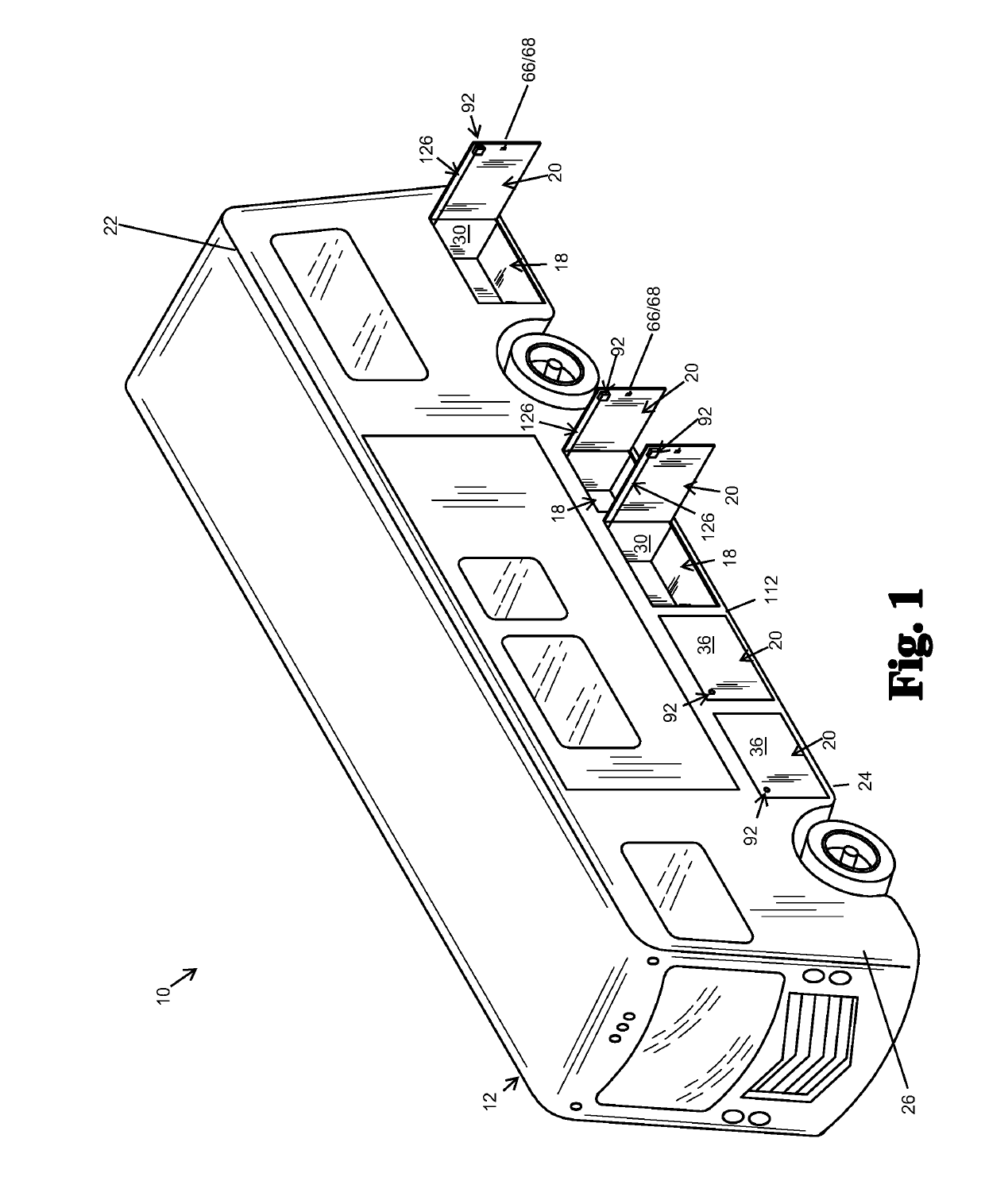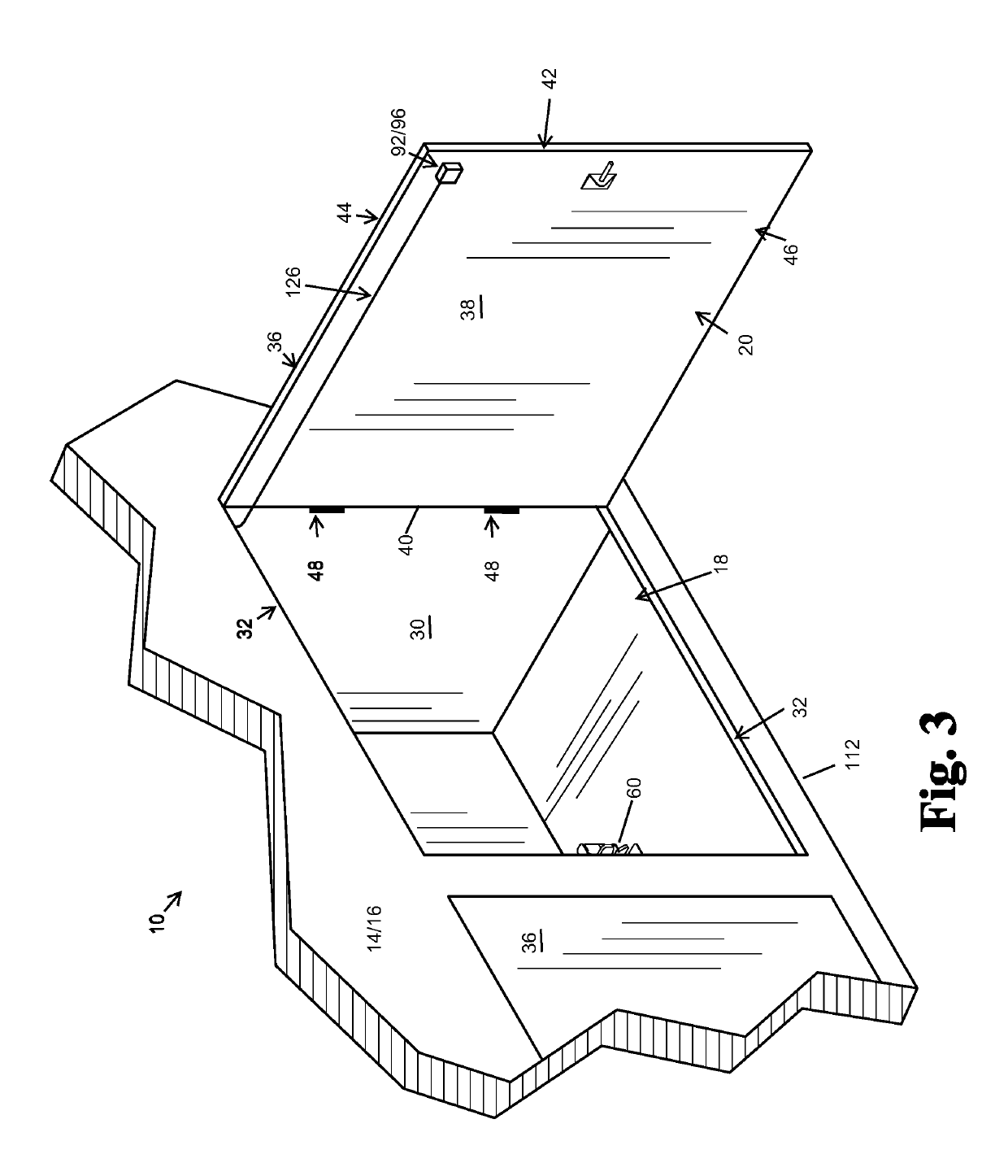While motorizing various systems of RVs certainly provides convenience and ease of use, one substantial drawback to motorizing these systems is that motorized systems are only functional when the RV is in a powered state (when power is available, when the batteries have a charge, when the generator is operational, and / or when the electrical system is functional).
In contrast, when the RV is in an unpowered state (when no power is available, when the batteries have died, when the generator is not functioning, and / or when an electrical
system failure has occurred) which tends to occur on a rather frequent basis due to the unique nature and use of RVs, the convenience of these powered systems becomes a substantial
disadvantage as the powered systems are inoperable until power is restored.
Inoperability is only a minor inconvenience for many systems of an RV, such as power windows, power seats,
power door locks, power awnings and the like.
However, for other systems, inoperability is a substantial inconvenience if not a significant problem.
While this arrangement is effective, there are a substantial number of disadvantages to using a visible
handle mechanism in cargo
doors of RVs.
One
disadvantage to using a
handle mechanism in a cargo door is that including a
handle mechanism in the cargo
doors requires placing an opening in the cargo door.
Placing an opening in the cargo door increases manufacturing steps, manufacturing costs and manufacturing complexity.
As such, placing a hole in the cargo door for a handle mechanism increases the costs of the cargo door.
Another
disadvantage to placing a hole in the cargo door is that including a hole in the cargo door tends to weaken or lessen the
structural integrity of the cargo door.
Another disadvantage to placing a hole in the cargo door is that this hole has a tendency to create weak spots in the cargo door and / or this hole has a tendency to focus stresses on particular portions of the cargo door, such as in corners of the cargo door hole.
This can lead to premature
cracking or failure of the cargo door.
Again, this complexity increases the cost of manufacturing the cargo door.
Another disadvantage to placing a hole in the cargo door is that this hole provides an entry way for water and contaminants to enter the cargo hold.
Again, this complexity increases the cost of manufacturing the cargo door.
Another disadvantage to using a handle mechanism in a cargo door is that the handle mechanisms themselves tend to be costly as they must be designed to withstand the elements.
This requires the handle mechanisms to be made from premium materials, which are expensive, such as stainless steel or have premium coatings, such as being plated or anodized or painted.
Despite these efforts, due to the harsh environment of use, and due to being exposed to the elements, the handle mechanisms tend to age rapidly which often leads to early replacement and / or failure of the handle mechanism.
Another disadvantage to using a handle mechanism in a cargo door is that often the opening in the cargo door is specific to the configuration of the handle mechanism.
Due to the
low volume production runs of RVs relative to automobiles or trucks, RV manufacturers have relatively low
purchasing power when it comes to dictating the design of the handle mechanisms.
This may also lead to obsoleting and / or discarding previously manufactured cargo
doors if the matching handle mechanism is no longer available.
Another disadvantage to using a handle mechanism in a cargo door is that many RV cargo door designs warp around the
door handle mechanism because the handle mechanism is tightened in placed.
This causes an interdependency between the hole cutout in the cargo door and the handle mechanism.
This interdependency may cause a barrier to change to better handle mechanism designs and often leads to continued use of suboptimal parts, well after better alternatives are available, for historical reasons.
Another disadvantage to including a handle mechanism in a cargo door of an RV is that the presence of a large handle mechanism in the cargo doors tends to create an unattractive aesthetic appearance.
This is exasperated when a plurality of handle mechanisms is present in the side of an RV.
Another substantial disadvantage of including a handle mechanism in the cargo door is that conventionally many RVs, and therefore many RV cargo doors, go through complicated, multi-layered, multi-
colored painting applications.
As such, if and when a handle mechanism needs to be replaced, matching the handle mechanism to the multi-layered, multi-
colored paint scheme becomes a substantial challenge, and therefore a substantial inconvenience and a substantial expense.
In addition, due to the relatively low production runs of any one type of RV, finding parts (such as a particular handle mechanism) also becomes a substantial inconvenience and expense.
These problems are often exasperated by the fact that most RVs have a number of cargo doors in each side of the RV.
As such, these problems are often repeated many times over for each RV.
One substantial disadvantage to motorizing cargo doors is in the event of a power-out situation (an unpowered state), the cargo doors are inoperable making it impossible to access the contents of the cargo holds behind the closed cargo doors.
This may cause a substantial inconvenience if not a significant problem.
Being unable to open the cargo doors and access the contents of the cargo holds may prevent access to the occupants' luggage, may prevent access to the tools needed to repair the RV, this may even prevent access to the systems of the RV that must be repaired, among countless other disadvantages.
However, it is a substantial problem if power is required to operate the cargo door to access the cargo hold, yet access to the cargo hold is required to restore power to the RV.
In this example, the problem prevents the solution, which is untenable.
 Login to View More
Login to View More  Login to View More
Login to View More 


